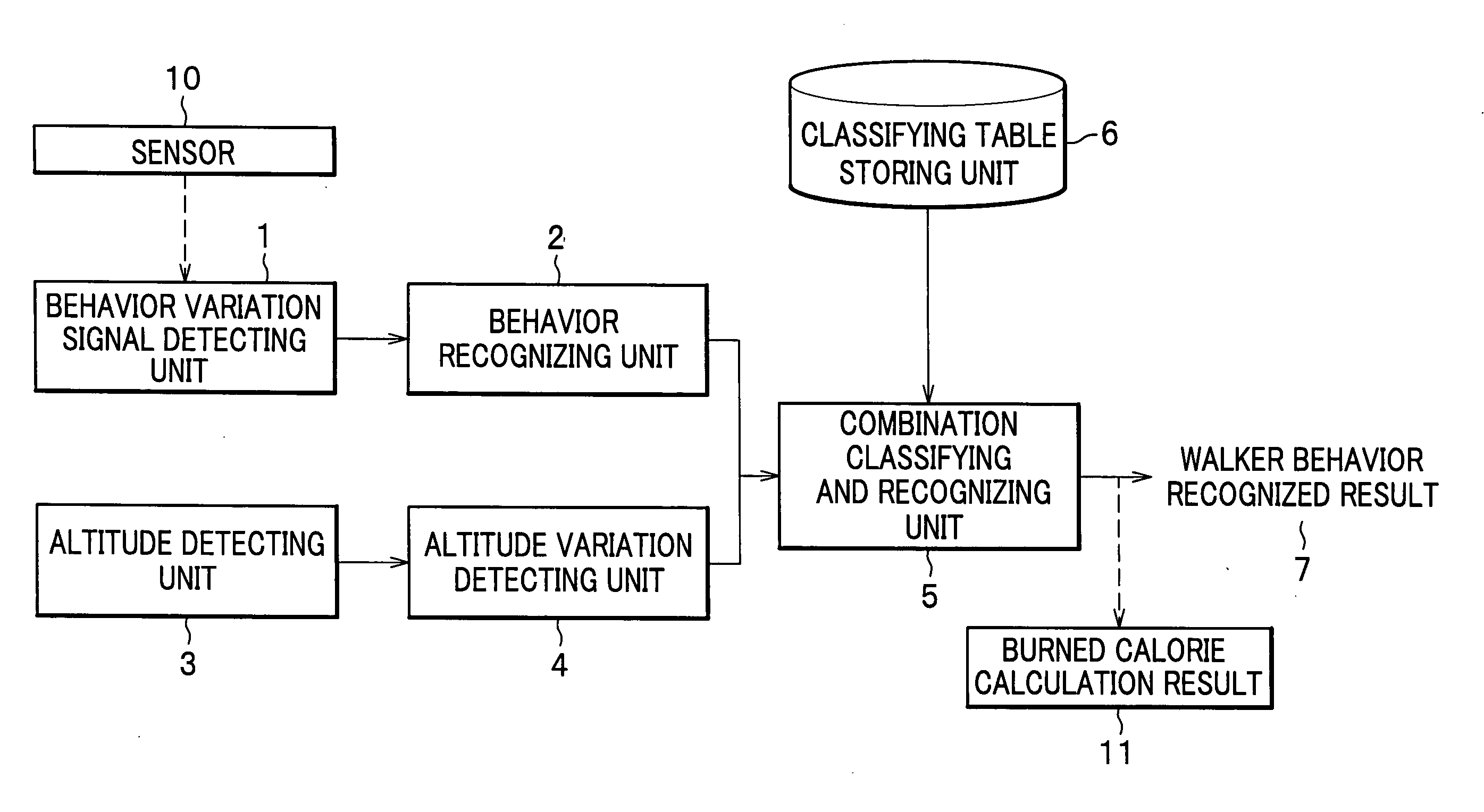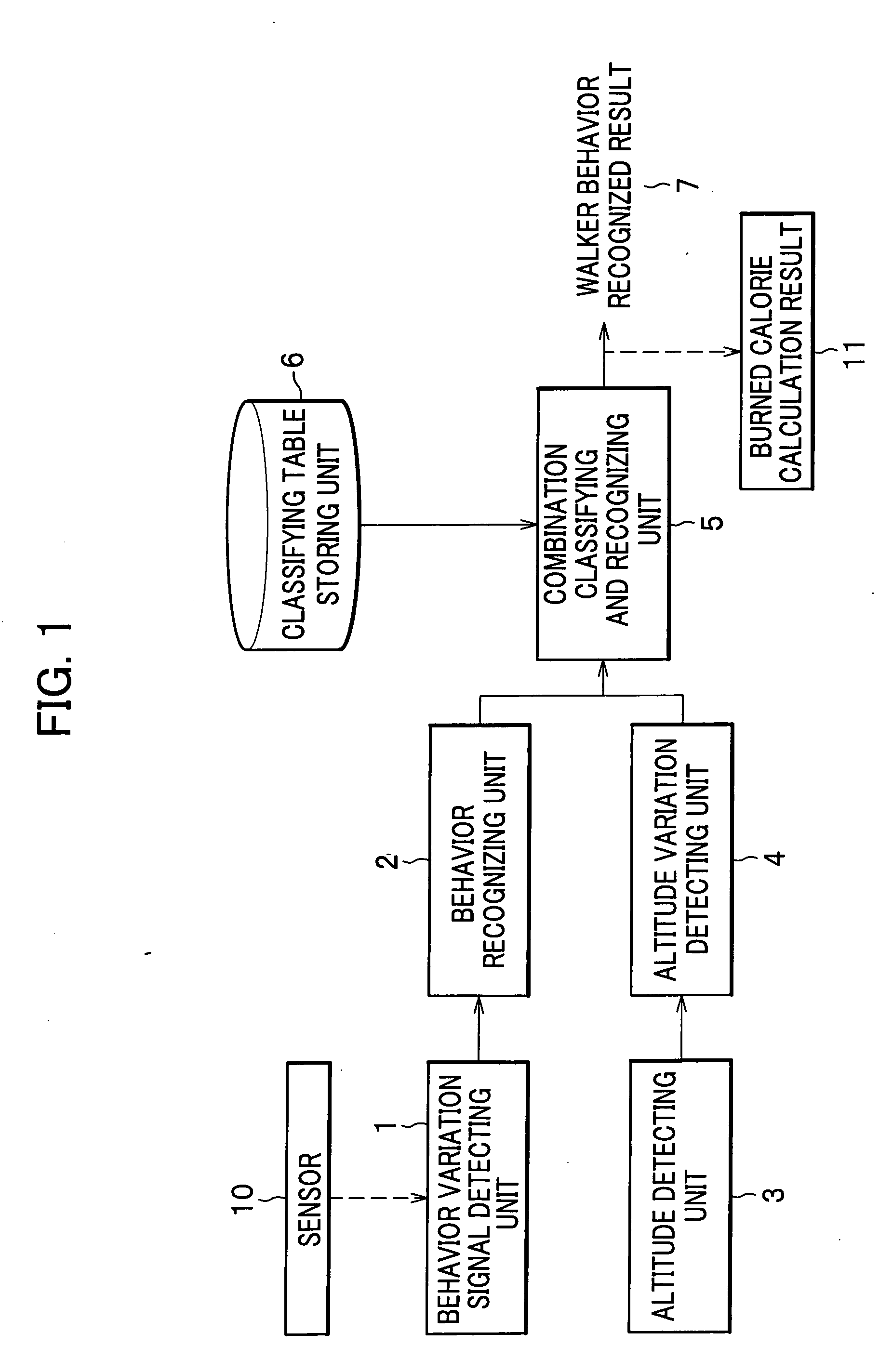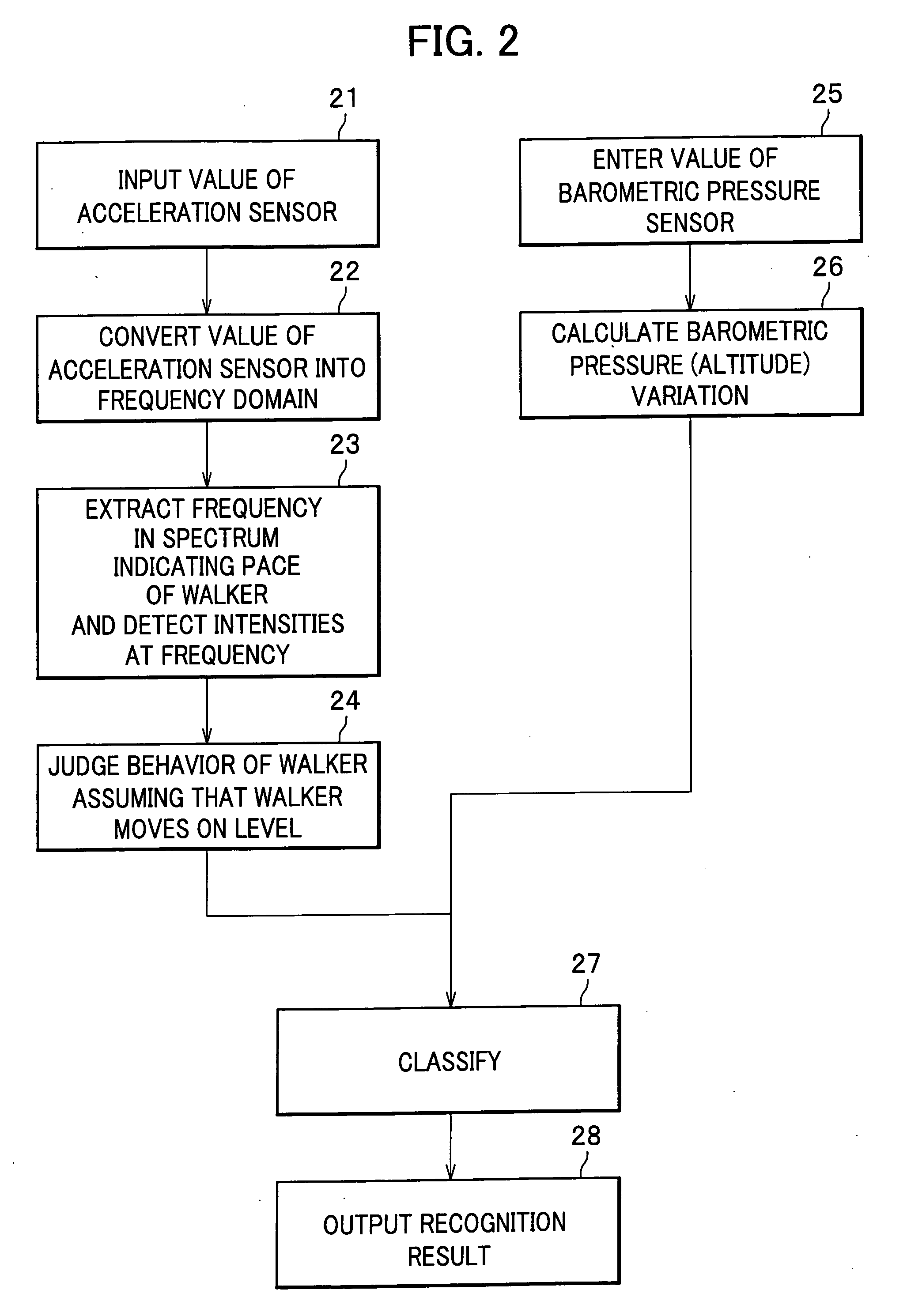Walker behavior detection apparatus
- Summary
- Abstract
- Description
- Claims
- Application Information
AI Technical Summary
Problems solved by technology
Method used
Image
Examples
first embodiment
[0031]FIG. 1 is a block diagram of a walker behavior detection apparatus according to a first embodiment of the present invention. A behavior variation signal detecting unit 1 detects a behavior variation signal. The behavior variation signal is a signal generated by a sensor 10 for detecting an acceleration variation accompanied with a movement of the walker, or a signal of an angular velocity, a displacement of a joint of the walker, a variation in an intensity of an electric field transmitted by a base station according to a position or the movement of the walker, a gyration variation of the walker, or the like. A behavior recognizing unit 2 recognizes a behavior or a variation of the behavior such as “walking” and “running” of the walker. As the behavior variation signal detecting unit 1, for example, an acceleration sensor (for example, see FIGS. 14 to 16) is available for detecting upward and downward acceleration variation accompanied with the behavior of the walker, and the ...
second embodiment
[0059] With reference to FIGS. 6 and 7 will be described a position detection apparatus, using the walking behavior detection in the first embodiment, capable of estimating an accurate stride in walking even with vertical movement using the recognized walking behavior as mentioned above to apply it to a position detection technology according to a second embodiment of the present invention. FIG. 7 is a block diagram of the behavior detection apparatus for estimating the stride and detecting a position. FIG. 6 is a table for estimating the stride. The estimation of a traveling speed (moving distance) of the walker on the level is disclosed in Japanese laid-open patent application publication No. 2004-085511 and Journal of paper A by the Institute of Electronics, Information and Communication Engineers, Vol. J87-A, No. 1, pp 78-86, January 2004. In the embodiment, a traveling speed (moving speed) of the walker on the level is estimated as follows:
[0060] (1) An acceleration variation ...
third embodiment
[0068] With reference to FIGS. 8 and 10 will be described a position detection apparatus according to a third embodiment in which the recognized walking behavior is compared with geometric information therearound, and the position of the walker corresponding to the recognized walking behavior is estimated. FIG. 8 is an illustration for operation during the movement on the staircase. FIG. 10 is a block diagram of the third embodiment. Numeral 101 in FIG. 10 is a behavior recognizing unit, which is the same as that shown in FIG. 1, for recognizing the walking behavior with the vertical movement. Numeral 102 denotes a position detecting unit of the walker. For example, this may be the moving locus calculating unit 72 described with reference to FIG. 7, a position detecting unit using a GPS unit, or a wireless LAN. The position detection apparatus described in the third embodiment is provided to detect the position of the walker having a higher accuracy than the position information det...
PUM
 Login to View More
Login to View More Abstract
Description
Claims
Application Information
 Login to View More
Login to View More - R&D
- Intellectual Property
- Life Sciences
- Materials
- Tech Scout
- Unparalleled Data Quality
- Higher Quality Content
- 60% Fewer Hallucinations
Browse by: Latest US Patents, China's latest patents, Technical Efficacy Thesaurus, Application Domain, Technology Topic, Popular Technical Reports.
© 2025 PatSnap. All rights reserved.Legal|Privacy policy|Modern Slavery Act Transparency Statement|Sitemap|About US| Contact US: help@patsnap.com



